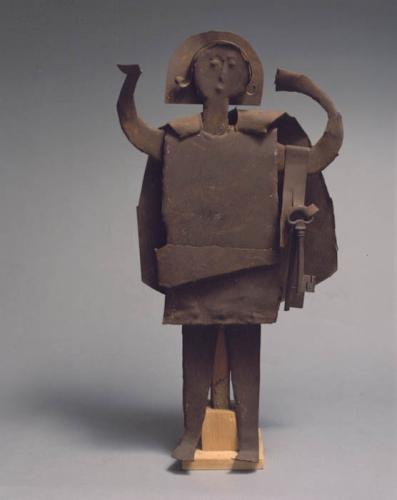Andre' Derain
dal 11/12/2002 al 23/2/2003
Segnalato da
11/12/2002
Andre' Derain
IVAM Instituto Valenciano de Arte Moderno, Valencia
Andre' Derain was one of the principal exponents of fauvism. This exhibition comprises a selection of 50 paintings, 20 drawings and 30 sculptures made by Derain between 1905 and 1940.

IVAM Centre Julio González
André Derain (Chatou, 1880 - Garches, 1954) was one of the principal exponents of fauvism. Between 1896 and 1898 he studied at the Académie Carrière, where he met Matisse, with whom he initiated a long friendship. He shared a studio with Maurice de Vlaminck in Chatou. After a trip to London, Derain returned to Paris, where he met Braque and Picasso.
The start of his painted work is marked by Vlaminck's suggestion to 'paint by instinct'. Pure saturated colours applied on large surfaces appear on his canvases, devoid of chiaroscuro or shadows. In 1905 his works and those of Vlaminck, Matisse, Van Dongen and Rouault were given the name fauves even before they had formed the group. During his Fauvist period, Derain managed to combine the radicalness of his theories with an inbred refinement. He became interested in Cubism and African art. He studied European classical tradition and primitive art. He was later one of the principal representatives of the 'return to order' movement during the period between the two world wars. He touched all painting genres: the nude, the landscape and the still life. His sculptural production, which he had started early on in his career, was intensified during World War I in the form of masks made out of copper retrieved from weapons. From 1939 onwards, he devoted himself entirely to sculpture, reflecting his interest in ancient statues and African art.
This exhibition comprises a selection of 50 paintings, 20 drawings and 30 sculptures made by Derain between 1905 and 1940.
ORGANIZED BY:
IVAM (Valencian Institute of Modern Art), Spain
CURATOR:
Rudolph Koella
CATALOGUE:
The catalogue will contain texts about Derain by Rudolph Koella and other specialists on the artist's oeuvre.
IVAM
Guillem de Castro, 118
Valencia



